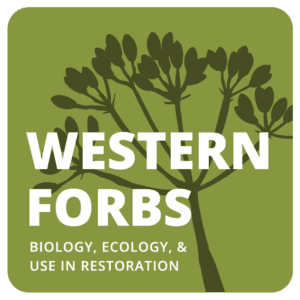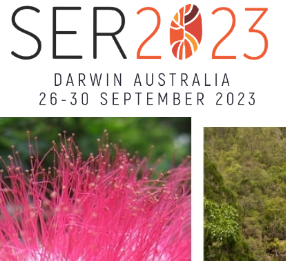Restoration
Workshop recordings.
Wet or mesic meadows are rare but disproportionately important ecosystems in Utah. Gully erosion and channel incision are widespread problems reducing natural resiliency and water storage capacity, which is impacting wildlife and working lands. Simple, low-tech restoration methods developed for dry lands of the desert southwest by Bill Zeedyk provide effective tools for protecting and restoring meadow systems. These techniques are cost-effective and hand-built allowing more people to participate in restoration.
In this one-day virtual workshop, Utah land managers and partners will be introduced to: reading the landscape to recognize meadow conservation opportunities, various low-tech “Zeedyk” structures (e.g., One Rock Dams, Zuni Bowls), project planning, implementation, and monitoring. Regional instructors will share tips and lessons learned from implementing low-tech meadow restoration projects across the West, while Utah conservation partners will discuss local opportunities and considerations.
View article.
This study investigated survival of transplanted herbaceous seedlings at different distances from Wyoming big sagebrush canopies. We planted two native perennial forb species, Munro’s globemallow and common yarrow, and two native perennial grass species, bluebunch wheatgrass and bottlebrush squirreltail, at four distances from sagebrush canopies at six sites across the Intermountain West, repeated across 2 years. Under above-normal precipitation, proximity to sagebrush influenced first-year survival of the forb, but not grass, species. Globemallow and yarrow survival were highest mid-way between the canopy dripline and maximum interspace distance between neighboring sagebrush plants. Ground cover characteristics and globemallow survival covaried with respect to distance from shrub, suggesting ground cover characteristics as indicators of suitable planting microsites. Under drier conditions, survival of all species was low and unaffected by distance from canopies. Our results demonstrate the value of fine-tuning the canopy-interspace paradigm to more carefully consider how plant performance may differ across zones within the interspace region between plants, especially when the goal is to maximize plant establishment in nondrought years.
View article.
Twelve in-depth interviews were conducted, and responses were analyzed using a qualitative method, causal layered analysis, not previously applied in a land management context. In the most superficial (litany) layer, cost and scale were prominent. The next (systemic) layer was framed by policy and bureaucracy limitations as well as technical barriers to implementation. In the third (worldview) layer, lack of a proactive management tradition within agencies represented a principal barrier. In the deepest (myth/metaphor) layer, the central belief is that human intervention should be used to protect ecosystem services only after they are disrupted due to human activity. Based on the different obstacles found at each level, we suggest ways to overcome the barriers detected.
Pre-fire grazing and herbicide treatments can affect post-fire vegetation in a Great Basin rangeland
View article.
This study found grazing and herbicide effects were consistent across cheatgrass biomass, count, and cover. Spring grazing reduced cheatgrass more effectively than fall grazing; however, this effect was detected primarily outside of the seeding treatments. Herbicide overall and in conjunction with grazing reduced cheatgrass and fuel loads. Among seeding treatments, seed mixtures proved more effective than monocultures for reducing both cheatgrass count and cover, particularly when combined with low seed rate. However, many seeding approaches resulted in higher cheatgrass dominance, and thus higher fuel loads.
The Western Forbs: Biology, Ecology, and Use in Restoration project is now a website.
Westernforbs.org is designed to aid seed collectors, seed growers, nurserymen, landowners, restoration practitioners, and land managers as they increase the supply and use of native forbs.
- Species menu tab – Offers complete reviews that synthesize existing research and practical experience available for western forb species. Anything reported on the biology, ecology, seed technology, and use in wildland restoration is included.
- Lookup Table menu tab – Summarizes forb species data in a searchable and filterable table. Included are the data on taxonomy, distribution, biology, ecology, seed supply development, and nursery and wildland restoration knowledge for each species.
View factsheet.
Scientists identified the most pollinator-friendly plants to include in seed mixes for use in restoration projects in the Northern Rockies.
Presentation recordings.
Description: This meeting is a time to check in with our friends and colleagues to see what’s new and where progress has been made in ecological restoration and information exchange among practitioners, researchers, and the public in the Great Basin. Please plan to join us for a single day virtual meeting. The meeting will be kicked off by a keynote from Alison Agneray, BLM. The meeting will include a GB SER business discussion and 10 talks by students, faculty, and agency researchers.
Presentations included the following topics.
Building a restoration network
Restoration in the face of climate extremes
Seed coatings to break dormancy, improve seed flow
Threats of human population growth
Invasion resistance
Establishment in sagebrush
Climate-adjusted provenancing
Non-target herbicide effects
Western forbs
Conference website.
SER2023 will held in person on 26-30 September 2023 in Darwin, Australia with additional virtual content delivery in the Western Hemisphere time zone during the week of 6 November 2023. The 10th World Conference on Ecological Restoration will focus on the important, and often neglected connection between culture and nature, including the role of restoration in enhancing and rebuilding that connection.
View report.
This report examines the needs for native plant restoration and other activities, provides recommendations for improving the reliability, predictability, and performance of the native seed supply, and presents an ambitious agenda for action. An Assessment of Native Seed Needs and the Capacity for Their Supply considers the various challenges facing our natural landscapes and calls for a coordinated public-private effort to scale-up and secure a cost-effective national native seed supply.
View article.
Thus, to understand the effects of removing contemporary grazing, we compared contemporary grazed areas to long-term (+10 yrs.) grazing exclusion areas in three common Wyoming big sagebrush community types: intact, degraded, and exotic annual grass-dominated types. Plant community characteristics (cover, density, diversity, richness, dissimilarity) were measured in 2020 and 2021 in five grazed and grazing excluded areas within each community type. Most plant community characteristics were not influenced by grazing exclusion, suggesting that the removal of contemporary grazing has little effect on Wyoming big sagebrush plant communities. The effect of grazing exclusion on Sandberg bluegrass abundance and litter cover varied among community types, suggesting that grazing exclusion effects slightly varied among community types. In contrast, most plant community characteristics varied among community types and between years, suggesting that grazing management plans need to account for the spatial and temporal variability among Wyoming big sagebrush communities. Furthermore, our results suggest that contemporary grazing exclusion has negligible effects compared to contemporary grazing on plant communities, and that exclusion of contemporary grazing (passive restoration) does not promote the recovery of degraded and annual grass invaded plant communities.








